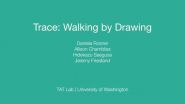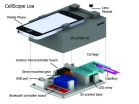(Press-News.org) MADISON, Wis. -- The suspicion that the federal Affordable Care Act reduces options for patients to choose their health care providers proves to be true, according to a new study co-authored by David Weimer, a professor with the La Follette School of Public Affairs at the University of Wisconsin-Madison. However, the quality of hospitals in insurance exchange networks was as good or better than those in commercial insurance networks.
The study, just published in the May issue of the journal Health Affairs, compared the hospital networks available to California consumers in two types of insurance in the initial exchange: private commercial coverage and coverage obtained through the state insurance marketplace or exchange, called Covered California.
"We sought to answer two questions," Weimer says. "First, are the networks of hospitals available through Covered California plans narrower than those provided in comparable commercial plans? Second, how do these networks compare in terms of the quality of the available hospitals?"
Overall, customers buying health insurance on the state exchange had less access to hospitals than did people on commercial plans, report Weimer and his co-authors, Simon F. Haeder, a doctoral student in the Department of Political Science at the University of Wisconsin-Madison, and Dana B. Mukamel, a professor in the Department of Medicine at the University of California, Irvine.
One comparison looked at the ratio of hospitals by region in the two types of plans and accounted for the carrier and plan type. "On average, customers on the exchange network had access to about 83 percent of the number of hospitals as did people on commercial health plans," Weimer says.
Another analysis paired exchange and commercial plans. "Of 58 comparisons, 38 exchange cases were more limited than their matched commercial networks in terms of the number of hospitals available to customers," Weimer says. "In 17 cases the networks included the same number of hospitals, and in three cases the exchange network was more extensive than the commercial network."
Weimer and his co-authors also looked at how far people had to travel to seek hospital care. "On average, 92 percent of residents were within at least one hospital market area in the exchange plans," Weimer says, "while the commercial networks reached about 93 percent."
They also found no difference in the quality of care between the two kinds of plans. "Indeed, our analyses paint a somewhat surprising picture of the difference in the average quality of hospitals in these networks," Weimer says. "Two of the analyses show no substantive difference in the average quality of the networks, but a third measure indicates that the average quality in the exchange networks is actually higher than that in the commercial networks. Insurers may be deliberately excluding some hospitals that have not been designated as top performers."
Overall, our results suggest that narrower exchange networks do not substantially restrict geographic access and, more importantly, do not reduce access to high quality care compared to the networks of standard commercial plans," he adds.
INFORMATION:
CONTACT: David Weimer, weimer@lafollette.wisc.edu, 608-263-2325; Simon Haeder, haeder@wisc.edu, 559-908-2704
NOTE: High-resolution headshot of Professor Weimer can be downloaded from http://www.lafollette.wisc.edu/images/facultystaff/highres/weimer.jpg
Creative athletes have been using geographic information systems to transform their running routes into kangaroos, robots and other works of art that they share online, and one romantic cyclist last year even spelled out "Will you marry me, Emily?" with his bike.
A new mobile app developed at the University of Washington does the opposite. The Trace app turns a digital sketch that you draw on your smartphone screen -- a heart, maple leaf, raindrop, sailboat -- into a walking route that you can send to a friend or loved one. The recipient of the "gift" tells the app how ...
Scientists at the National Institutes of Health have solved a long-standing mystery about the origin of one of the cell types that make up the ovary. The team also discovered how ovarian cells share information during development of an ovarian follicle, which holds the maturing egg. Researchers believe this new information on basic ovarian biology will help them better understand the cause of ovarian disorders, such as premature ovarian failure and polycystic ovarian syndrome, conditions that both result in hormone imbalances and infertility in women.
Researchers at the ...
The Alaska salmon fishery is touted as one of the best in the world. When measured with an ecological yardstick, it is - fish stocks are healthy and the fishery is certified by the Marine Stewardship Council as consistently meeting rigorous biological standards. Fish are individually counted as they swim upstream to ensure there are enough to breed.
But Alaska salmon falls short and lags behind some of the world's fisheries in how it benefits local fishermen, processing workers and nearby rural communities, according to a new assessment that ranks the vitality of a fishery ...
Diets of snakes from a temperate region in South America may depend more on phylogeny (ancestry) than ecology, according to a study published May 6, 2015 in the open-access journal PLOS ONE by Gisela Bellini from Instituto Nacional de Limnología, Argentina and colleagues.
Some scientists believe that the deep history hypothesis based on phylogeny -- the history of evolution, or ancestry and relationships between snakes -- and ecological interactions from the competition-predation hypothesis may act together to determine the structure of snake communities. The authors ...
Post-surgical leaks that develop after a segment of the colon has been removed and stitched back together often are caused not by negligence or technical error but by bacteria in the bowel that elude antibiotics, according to new evidence about this devastating complication of gastrointestinal surgery.
Such leaks, which can develop days or weeks after the procedure, allow the bowel's contents to spill into the abdomen and can cause pain, fever, sepsis and even death.
In patients undergoing high risk surgery such as in the rectum, leak rates can approach 30 percent. ...
Berkeley -- A research team led by engineers at the University of California, Berkeley, has developed a new mobile phone microscope that uses video to automatically detect and quantify infection by parasitic worms in a drop of blood. This next generation of UC Berkeley's CellScope technology could help revive efforts to eradicate debilitating diseases in Africa by providing critical information for health providers in the field.
"We previously showed that mobile phones can be used for microscopy, but this is the first device that combines the imaging technology with ...
The rise of antibiotic-resistant bacteria is a growing problem in the United States and the world. New findings by researchers in evolutionary biology and mathematics could help doctors better address the problem in a clinical setting.
Biologist Miriam Barlow of the University of California, Merced, and mathematician Kristina Crona of American University tested and found a way to return bacteria to a pre-resistant state. In research published in the open-access journal PLOS ONE, they show how to rewind the evolution of bacteria and verify treatment options for a family ...
Scientists from the National Institute of Allergy and Infectious Diseases (NIAID), part of the National Institutes of Health, and the University of California, Berkeley, and colleagues have developed a mobile phone microscope to measure blood levels of the parasitic filarial worm Loa loa. The point-of-care device may enable safe resumption of mass drug administration campaigns to eradicate the parasitic diseases onchocerciasis (river blindness) and lymphatic filariasis (elephantiasis).
Efforts to eliminate these diseases in Central Africa through community-wide administration ...
Just witnessing aggression or other bad behaviour at work can affect our well-being, but the right support from employers and colleagues can limit the consequences.
That is the conclusion of research being presented today, Thursday 7 May 2015, by Dr Christine Sprigg from the Institute of Work Psychology at the Sheffield University Management School at the Annual Conference of the British Psychological Society in Liverpool.
Dr Sprigg and her colleagues surveyed 127 British employees who had witnessed aggression at work. Employees were asked to complete a number of psychological ...
Psychologists are to improve online health information on lung cancer after research showed that family members are more likely to search online to encourage loved ones to seek help.
This is one of the outcomes from research by PhD student Julia Mueller based in the School of Nursing, Midwifery and Social Work at The University of Manchester (part of the Manchester Cancer Research Centre) who will present her study today, Thursday 7 May 2015, at the Annual Conference of the British Psychology Society being held in Liverpool.
Julia Mueller said: "People displaying ...



